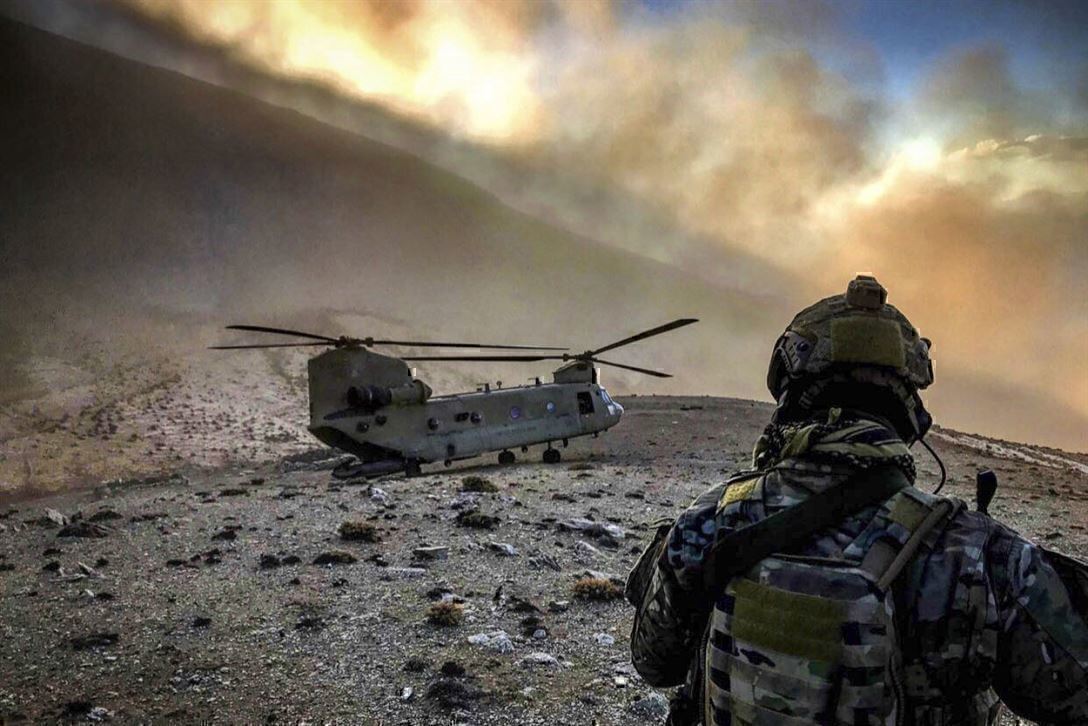Think it’s hard making it month to month in the barracks on just an E-1 pay? Well, the recruits who won America’s earlier wars had to make ends meet with much, much less to draw on. See how much troops made in each conflict, both in their own currency and adjusted for inflation:
Author’s note: The pay structure changed over time. From the Korean War to today, military pay has been relatively consistent across the services and the numbers listed in entries 8-11 reflect the financial realities of an E-1 enlisted servicemember. For earlier conflicts, pay was calculated using the salary of a first-year Army private or a junior infantryman.
1. Revolutionary War
Painting: Battle of Trenton by Charles McBarron
Privates in 1776 earned $6 a month plus a bounty at the end of their service. That pay would equate to $157.58 today, a pretty cheap deal for the poor Continental Congress. Unfortunately for soldiers, Congress couldn’t always make ends meet and so troops often went without their meager pay.
2. War of 1812
Andrew Jackson wins the Battle of New Orleans two weeks after the War of 1812 ended.
Pay started at $5 a month for privates but was raised to $8 at the end of 1812. This was in addition to bounties ranging from $31 and 160 acres of land to $124 and 320 acres of land.
That $8 translates to $136.28 in 2016. The bounties ranged from $528.10 to $2,112.40 for terms of five years to the duration of the war.
3. Mexican-American War
Storming of Monterey in September 1846 during the Mexican-American War. Image date: ca. March 2, 1847.
Young infantrymen in their first year of service during the Mexican-American War pocketed $7 per month, according to this Army history. That’s $210.10 in 2016 dollars.
4. Civil War
The Battle of Chickamauga raged from Sep. 19-20, 1863. Painting: Library of Congress
Union privates in 1863 brought home $13 a month which translates to $237.51 in modern dollars. Confederate privates had it a little worse at $11 a month. The Confederate situation got worse as the war went on since the Confederate States of America established their own currency and it saw rapid inflation as the war situation got worse and worse.
5. Spanish-American War
An undated photo shows soldiers manning a battle signal corps station during the Spanish-American War. Photo: Naval History and Heritage Command
While Army private pay in the Spanish-American War was still $13 like it had been in the Civil War, a period of deflation had strengthened the purchasing power of that monthly salary. In 2016 dollars, it would be worth $356.26.
6. World War I
Photo: National Archives and Records Administration
A private, private second class, or bugler in his first year of service in 1917 was entitled to $30 a month. In exchange for this salary, which would equate to $558.12 today, privates could expect to face the guns of the Germans and other Axis powers.
World War I was the first war where, in addition to their pay, soldiers could receive discounted life insurance as a benefit. The United States Government Life Insurance program was approved by Congress in 1917 and provided an alternative to commercial insurance which either did not pay out in deaths caused by war or charged extremely high premiums for the coverage.
7. World War II
Photo: US Army
In 1944, privates serving in World War II made $50 a month, or $676.51 in 2016 dollars. It seems like toppling three Fascist dictators would pay better than that, but what do we know.
8. Korean War
Dressed in parkas (Overcoat, parka type, with pile liner), Missouri infantrymen pose for a New Year greeting, 19th Infantry Regiment, Kumsong front, Korea, 14 December 1951.
The minimum payment for an E-1 in 1952 was $78 a month which would equate to $700.92 in 2016. Most soldiers actually deploying to Korea would have over four months in the Army and so would’ve received a pay bump to at least $83.20, about $747.64 today.
This was in addition to a foreign duty pay of $8 a month along with a small payment for rations when they weren’t provided.
9. Vietnam War
A U.S. Army soldier smokes after an all-night ambush patrol in Vietnam. Photo: Sgt. 1st Class Peter P. Ruplenas
E-1 wages were not increased between 1952 and 1958, so Korean War and Vietnam War troops made the same amount of money at the lower ranks — except inflation over the years drove the real value of the wages down. New soldiers pocketing $78 would have a salary that equates to 642.71 now, while those with over four months of service who pocketed $83.20 were receiving the equivalent of $685.56 in today’s dollars.
10. Persian Gulf War
Yeah, $1318.12 should cover patrolling through this. No problem. Photo: Public Domain
Grunts who went into Iraq to topple Saddam Hussein were paid the princely sum of $753.90 a month in basic pay, unless they somehow managed to make it to Iraq with less than four months of service. Then they received $697.20.
These amounts would translate in 2016 dollars to $1318.12 and $1,218.98 respectively.
11. War in Afghanistan and the Iraq War
Photo: Spc. Victor Egorov
Troops bringing the American flag back to Iraq in 2003 or deploying to Afghanistan in the same time period received just a little more than their Persian Gulf War predecessors, with $1064.70 for soldiers with less than four months of service and $1,150.80 for the seasoned veterans with four months or more under their belts.
In 2016 dollars, those salaries equate to $1377.93 and $1,489.36, a modest increase from the Persian Gulf War.
This article originally appeared on 5 Reasons Why Troops Stick Together After the Military
4 Reasons Why Showering On Deployment is Disgusting
7 of the Greatest Songs Every Veteran Knows
6 Things You’d Take Back Before Leaving the Military
6 Dumb Things Veterans Lie About on the Internet
Follow We Are The Mighty on Twitter
READ NEXT: 5 THINGS SERVICE MEMBERS HATE THAT ARE ACTUALLY USEFUL



















